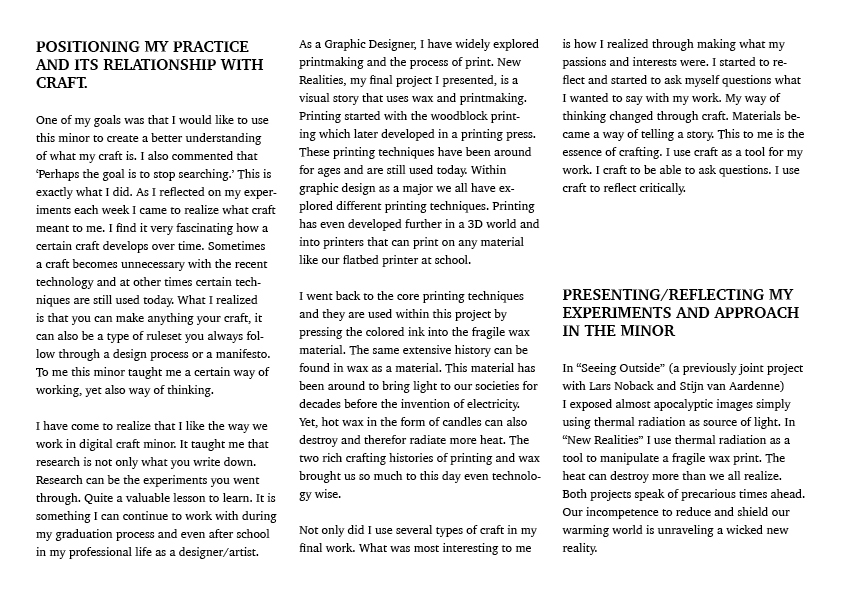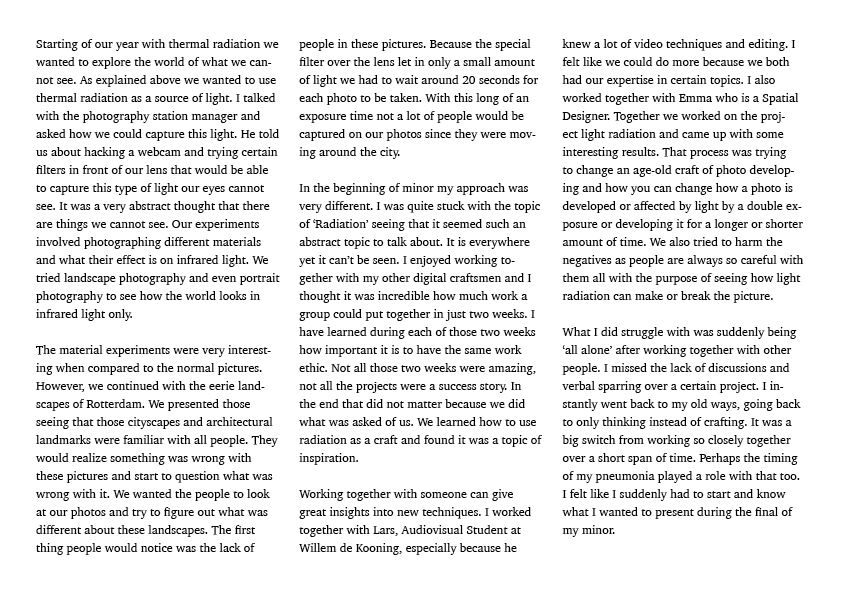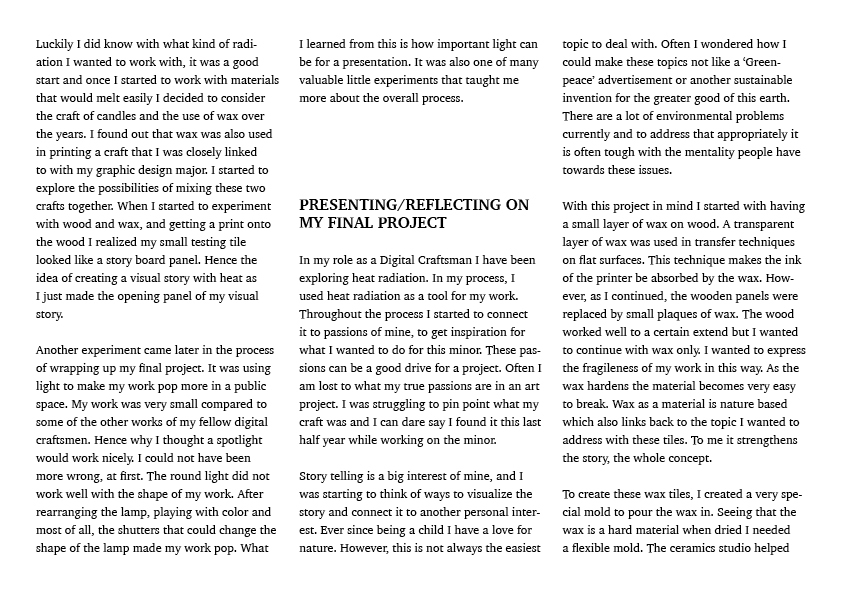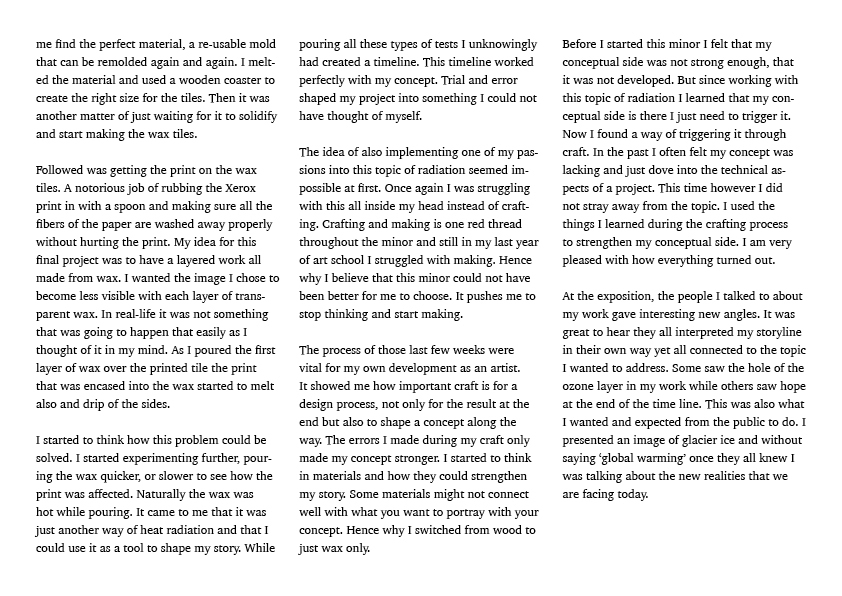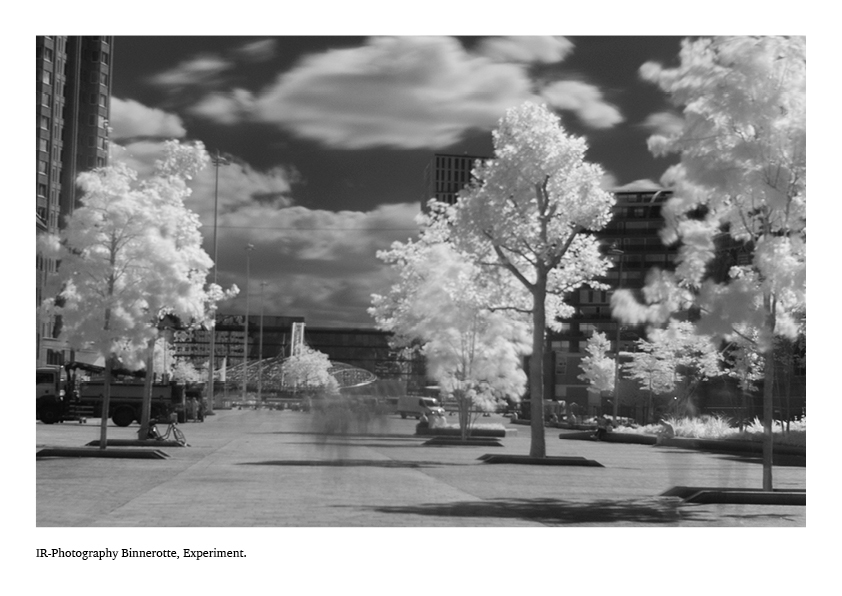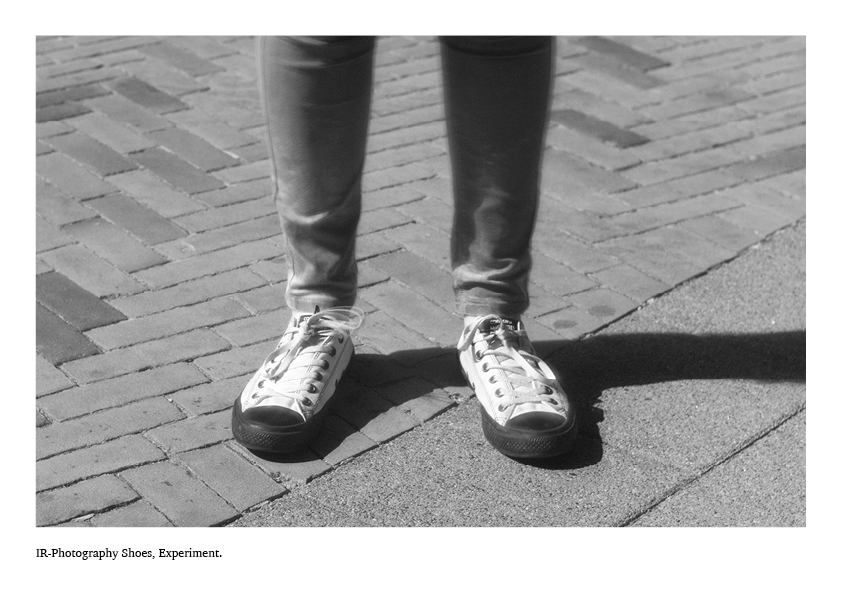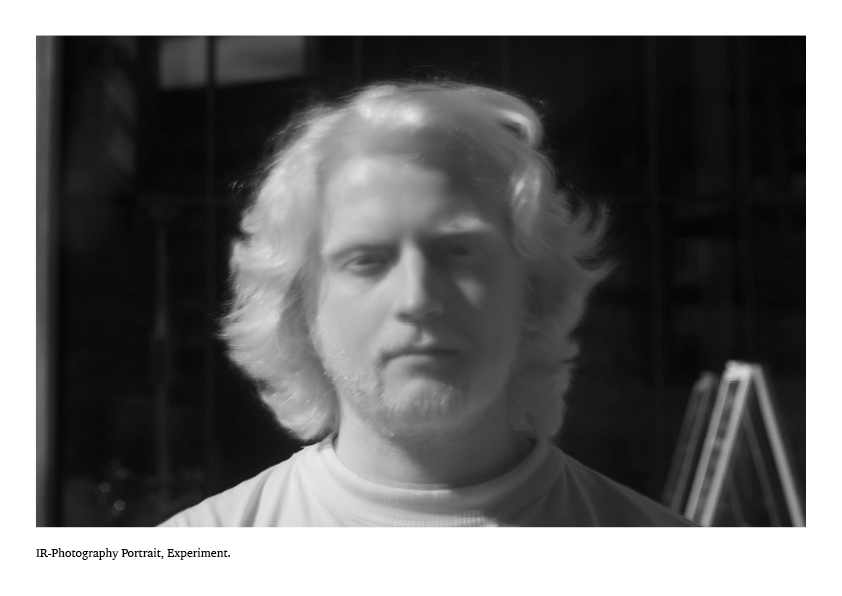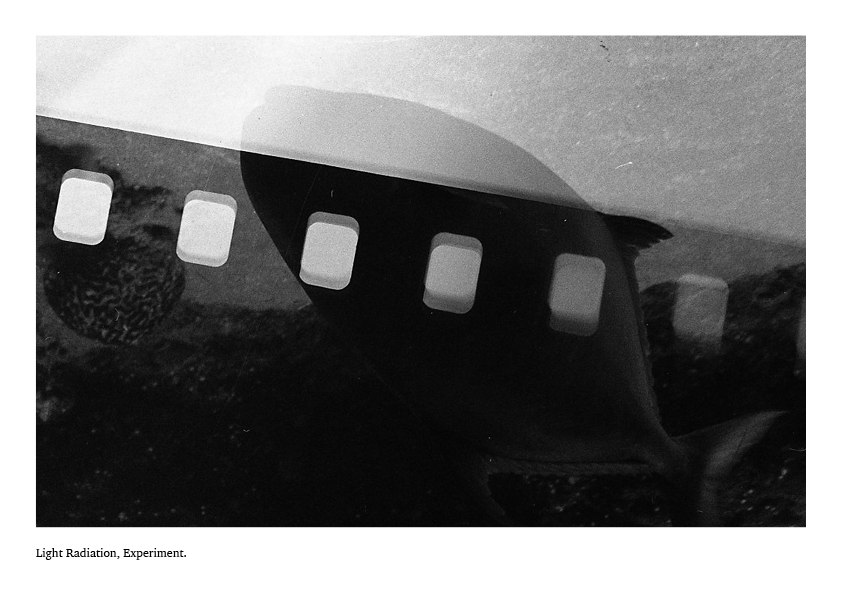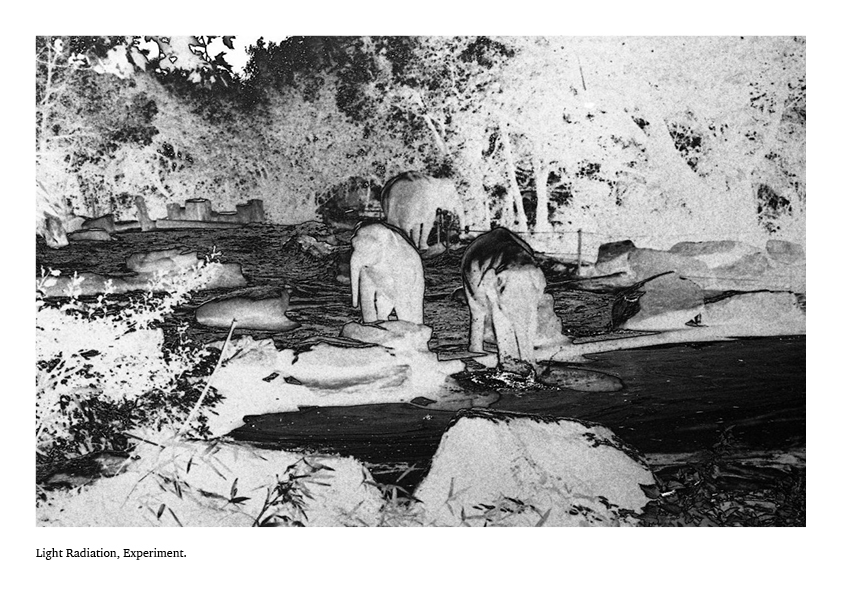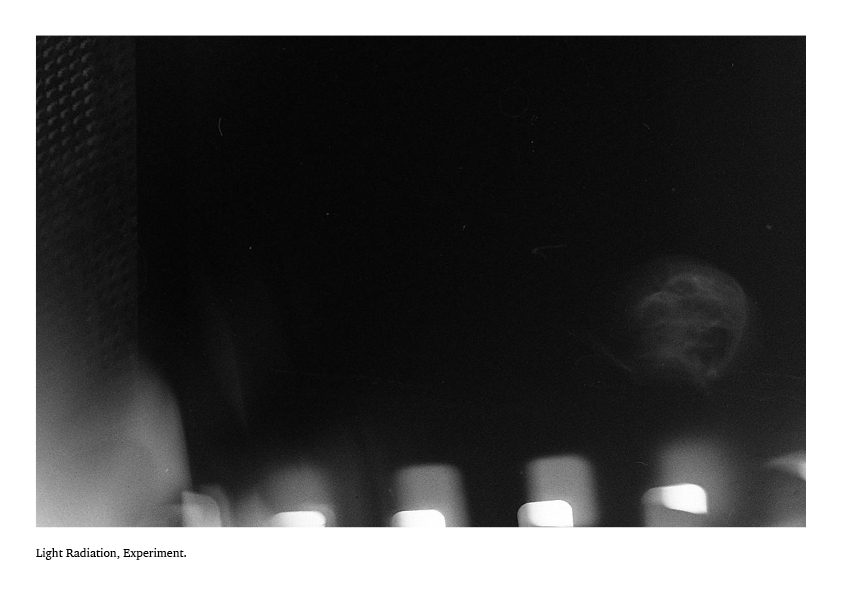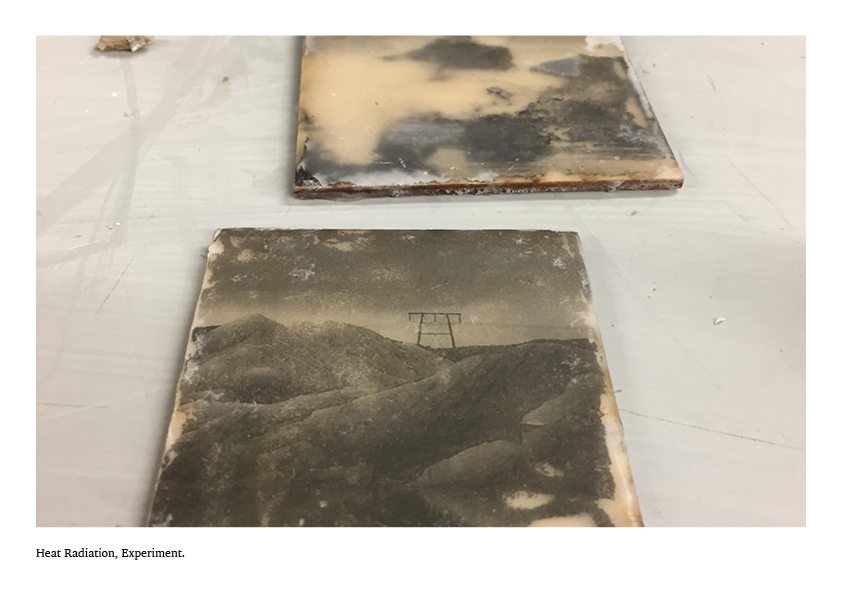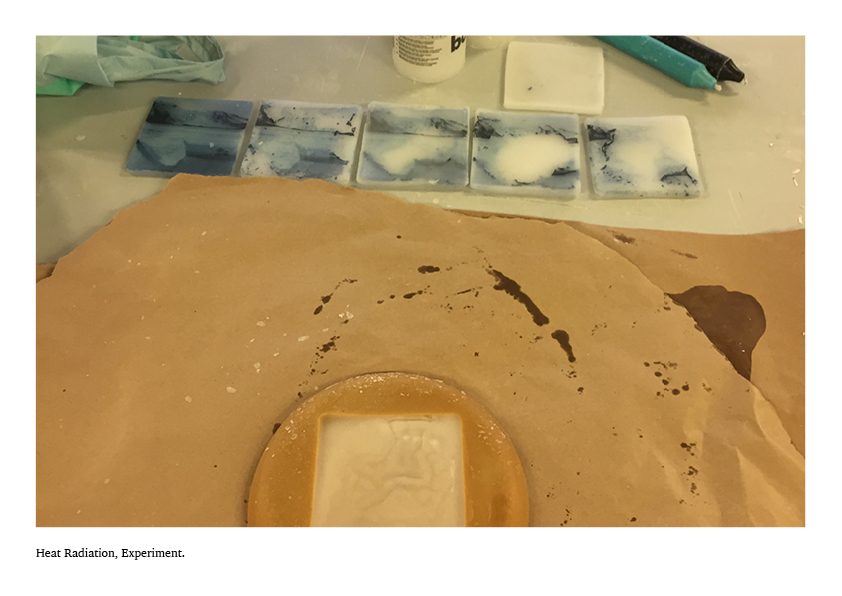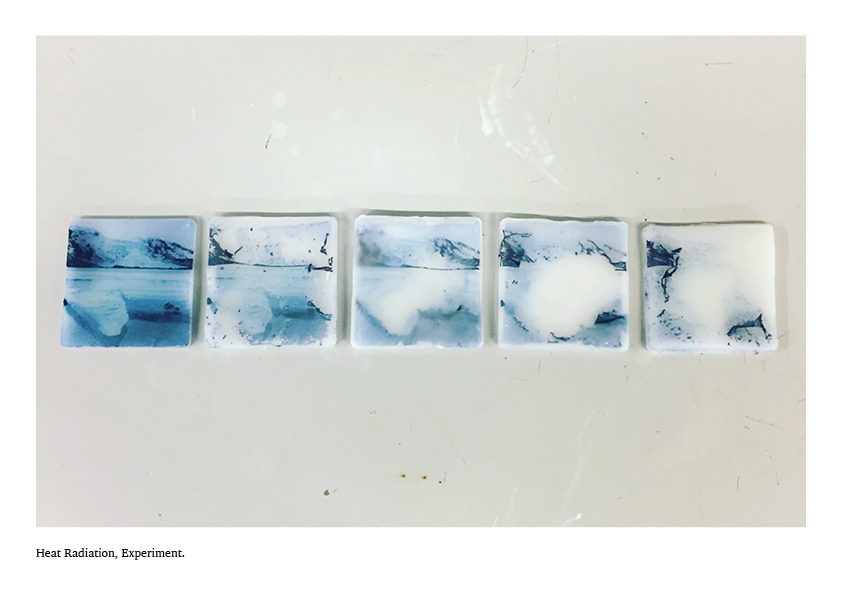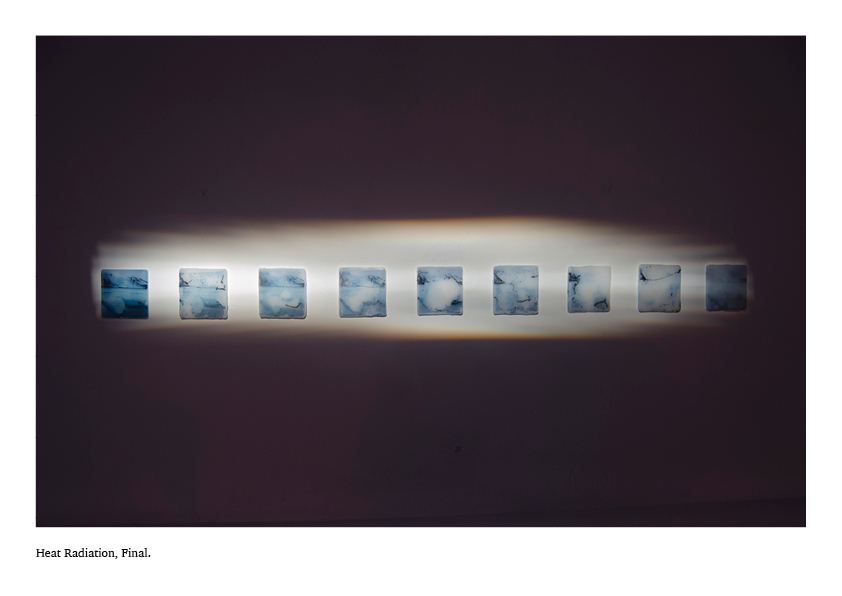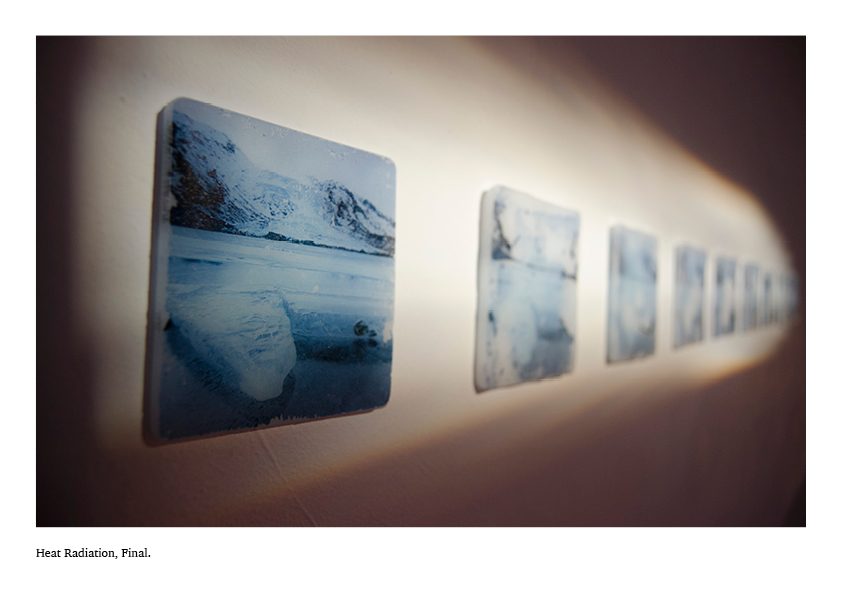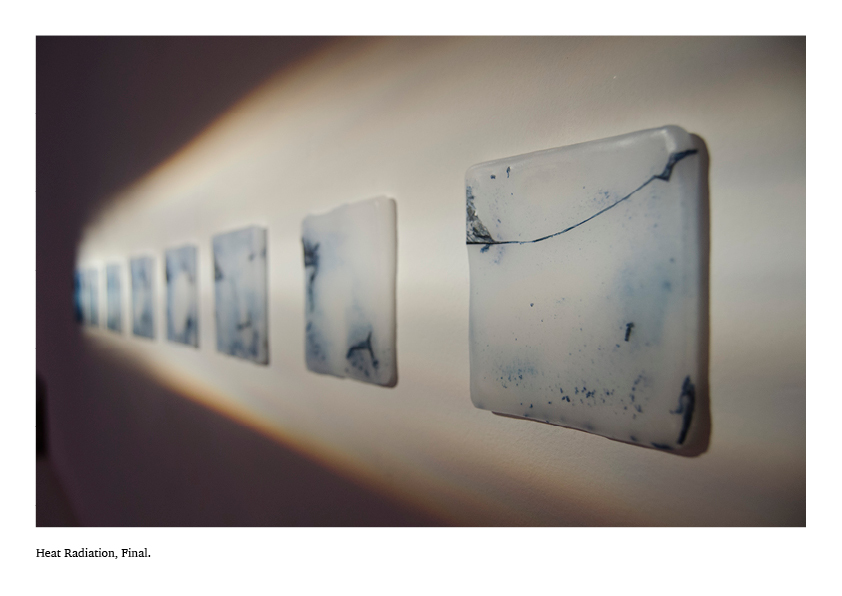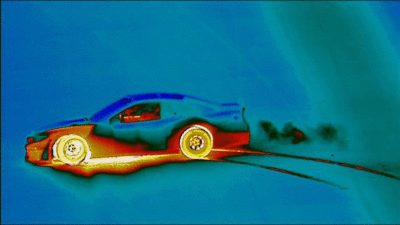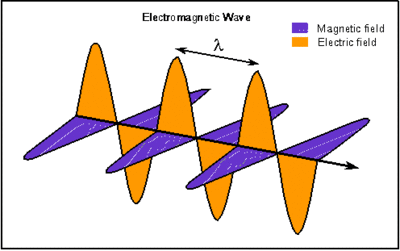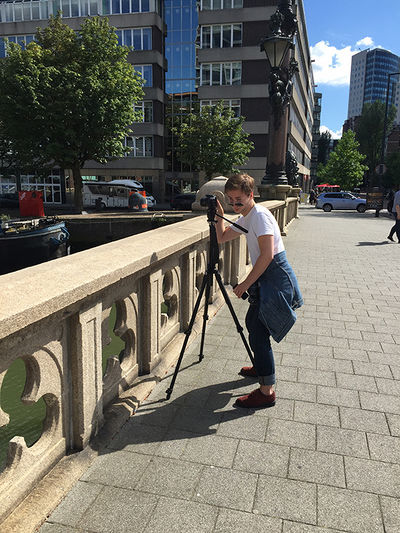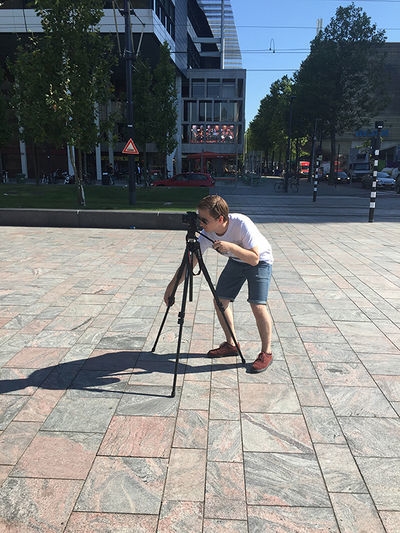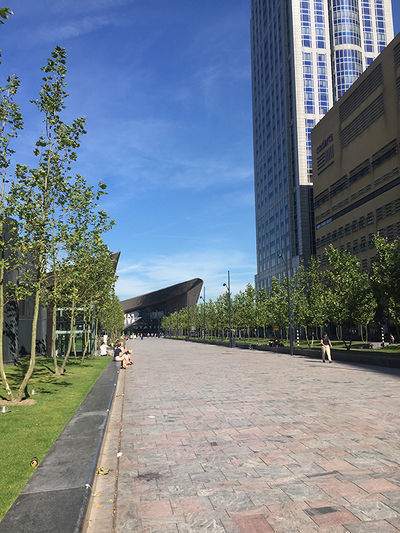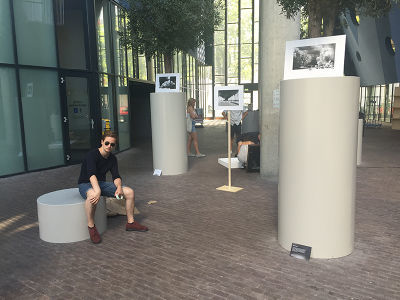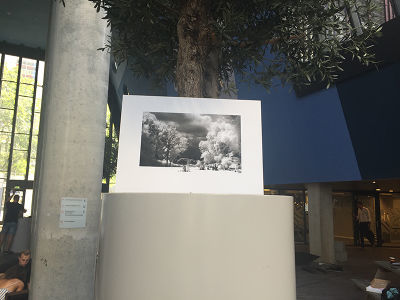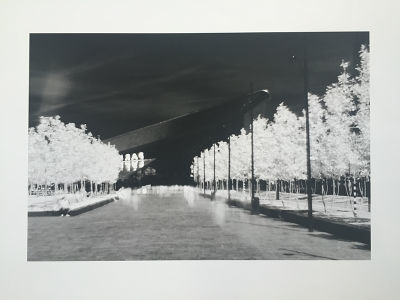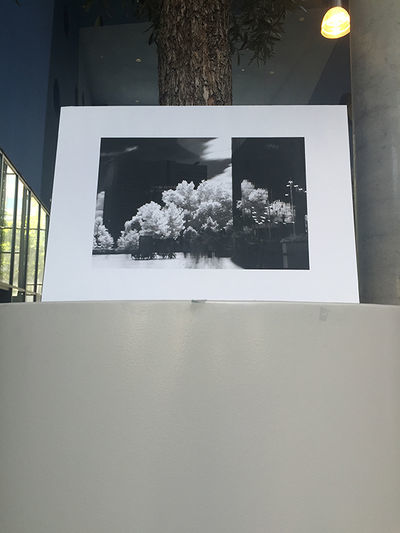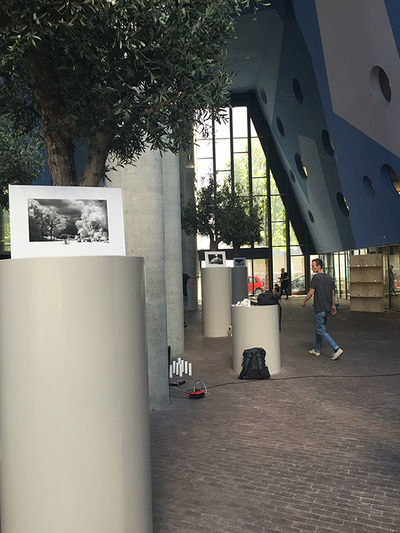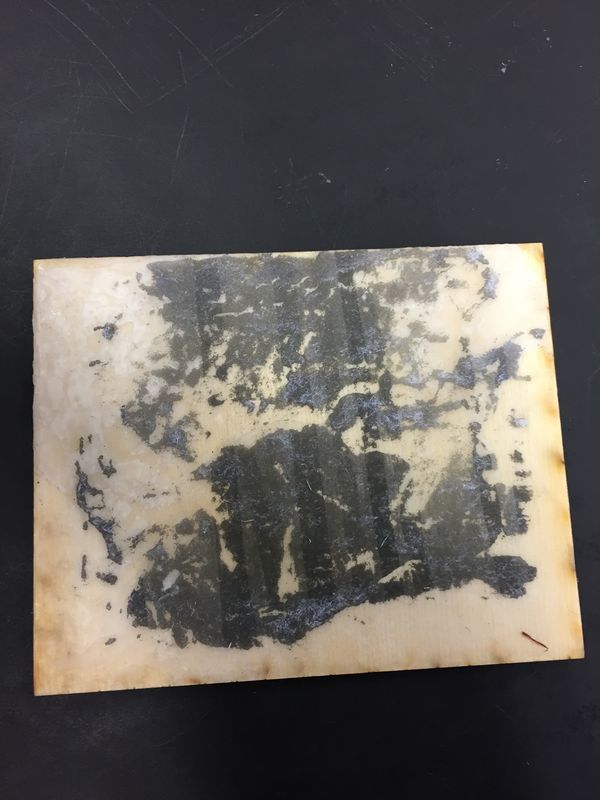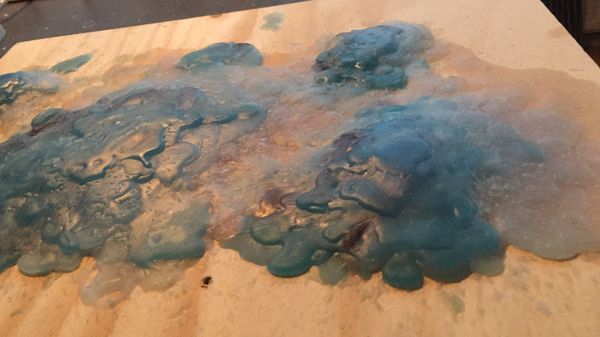Difference between revisions of "User:MarjoleinStassen/RADIATION"
| (18 intermediate revisions by the same user not shown) | |||
| Line 1: | Line 1: | ||
= RADIATION = | = RADIATION = | ||
| + | |||
| + | === Written Assignment === | ||
| + | |||
| + | [[https://mab.to/6SVKUMYpt Download PDF Here]] (Better Quality!) | ||
| + | |||
| + | [[File:Research Paper.jpg]] | ||
| + | [[File:Research Paper2.jpg]] | ||
| + | [[File:Research Paper3.jpg]] | ||
| + | [[File:Research Paper4.jpg]] | ||
| + | [[File:Research Paper5.jpg]] | ||
| + | [[File:Research Paper6.jpg]] | ||
| + | [[File:Research Paper7.jpg]] | ||
| + | [[File:Research Paper8.jpg]] | ||
| + | [[File:Research Paper9.jpg]] | ||
| + | [[File:Research Paper10.jpg]] | ||
| + | [[File:Research Paper11.jpg]] | ||
| + | [[File:Research Paper12.jpg]] | ||
| + | [[File:Research Paper13.jpg]] | ||
| + | [[File:Research Paper14.jpg]] | ||
| + | [[File:Research Paper15.jpg]] | ||
| + | [[File:Research Paper16.jpg]] | ||
| + | [[File:Research Paper17.jpg]] | ||
| + | [[File:Research Paper18.jpg]] | ||
| + | |||
| + | |||
| + | [[/WAPREV | <small>PREVIOUS WRITING</small>]] | ||
| + | |||
| + | |||
=== KICK-OFF THERMAL RADIATION === | === KICK-OFF THERMAL RADIATION === | ||
| − | Thermal radiation is electromagnetic radiation generated by the thermal motion of '''charged particles in matter.''' All matter with a temperature greater than absolute zero emits thermal radiation. When the temperature of a body is greater than absolute zero, inter-atomic collisions cause the '''kinetic energy''' of the atoms or molecules to change. This results in charge-acceleration and/or dipole oscillation which produces electromagnetic radiation, and the wide spectrum of radiation reflects the wide spectrum of energies and accelerations that occur even at a single temperature. | + | |
| + | ==== Definition ==== | ||
| + | |||
| + | :1. PHYSICS | ||
| + | ::the emission of energy as electromagnetic waves or as moving subatomic particles, especially high-energy particles which cause ionization. | ||
| + | |||
| + | :2. BIOLOGY | ||
| + | ::divergence out from a central point, in particular evolution from an ancestral animal or plant group into a variety of new forms. | ||
| + | ::"evolution is a process of radiation not progression" | ||
| + | |||
| + | |||
| + | ==== Intro ==== | ||
| + | [[file:auto_thermo.gif | right | 400px]]Thermal radiation is electromagnetic radiation generated by the thermal motion of '''charged particles in matter.''' All matter with a temperature greater than absolute zero emits thermal radiation. When the temperature of a body is greater than absolute zero, inter-atomic collisions cause the '''kinetic energy''' of the atoms or molecules to change. This results in charge-acceleration and/or dipole oscillation which produces electromagnetic radiation, and the wide spectrum of radiation reflects the wide spectrum of energies and accelerations that occur even at a single temperature. | ||
Examples of thermal radiation include the '''visible light and infrared light''' emitted by an incandescent light bulb, the infrared radiation emitted by animals and detectable with an infrared camera, and the cosmic microwave background radiation. Thermal radiation is different from thermal convection and thermal conduction—a person near a raging bonfire feels radiant heating from the fire, even if the surrounding air is very cold. | Examples of thermal radiation include the '''visible light and infrared light''' emitted by an incandescent light bulb, the infrared radiation emitted by animals and detectable with an infrared camera, and the cosmic microwave background radiation. Thermal radiation is different from thermal convection and thermal conduction—a person near a raging bonfire feels radiant heating from the fire, even if the surrounding air is very cold. | ||
| Line 8: | Line 48: | ||
'''Sunlight''' is part of thermal radiation generated by the hot plasma of the Sun. '''The Earth also emits thermal radiation''', but at a much lower intensity and different spectral distribution (infrared rather than visible) because it is cooler. The Earth's '''absorption of solar radiation''', followed by its outgoing thermal radiation are the two most important processes that determine the temperature and climate of the Earth. | '''Sunlight''' is part of thermal radiation generated by the hot plasma of the Sun. '''The Earth also emits thermal radiation''', but at a much lower intensity and different spectral distribution (infrared rather than visible) because it is cooler. The Earth's '''absorption of solar radiation''', followed by its outgoing thermal radiation are the two most important processes that determine the temperature and climate of the Earth. | ||
| + | Thermal radiation is one of the fundamental mechanisms of heat transfer. | ||
| − | + | Forms of electromagnetic radiation like radio waves, light waves or infrared (heat) waves make characteristic patterns as they travel through space. Each wave has a certain shape and length. The distance between peaks (high points) is called wavelength. | |
| − | |||
| − | + | [[file:electromag.gif | 400px]] | |
| − | |||
| − | |||
| − | |||
| + | ==== Links ==== | ||
* http://phys.org/news/2016-08-optical-material-unprecedented-thermal.html | * http://phys.org/news/2016-08-optical-material-unprecedented-thermal.html | ||
* http://www.atomicarchive.com/Effects/effects7.shtml | * http://www.atomicarchive.com/Effects/effects7.shtml | ||
| Line 27: | Line 65: | ||
* https://www.buzzfeed.com/simoncrerar/natural-phenomena-you-wont-believe-actually-exist?utm_term=.mkBAwoLwW#.ipz42q72e | * https://www.buzzfeed.com/simoncrerar/natural-phenomena-you-wont-believe-actually-exist?utm_term=.mkBAwoLwW#.ipz42q72e | ||
* http://www.emlii.com/dd9b03c9/22-Ridiculously-Cool-Rare-Natural-Phenomena-That-Happen-on-Earth | * http://www.emlii.com/dd9b03c9/22-Ridiculously-Cool-Rare-Natural-Phenomena-That-Happen-on-Earth | ||
| − | * | + | * http://www.storypick.com/17-stunning-rare-natural-phenomena-occur-earth/ |
* http://inyminy.com/23-miraculously-awesome-rare-natural-phenomena-occur-earth/ | * http://inyminy.com/23-miraculously-awesome-rare-natural-phenomena-occur-earth/ | ||
| − | |||
| − | |||
| − | |||
* http://www.wired.com/2016/08/meghann-riepenhoff-littoral-drift/ | * http://www.wired.com/2016/08/meghann-riepenhoff-littoral-drift/ | ||
* https://www.wired.com/2016/08/quickly-climate-change-accelerating-167-maps/ | * https://www.wired.com/2016/08/quickly-climate-change-accelerating-167-maps/ | ||
| Line 40: | Line 75: | ||
* https://www.behance.net/gallery/34555299/Irradi-ID | * https://www.behance.net/gallery/34555299/Irradi-ID | ||
* https://www.behance.net/gallery/14740105/Tsunami- | * https://www.behance.net/gallery/14740105/Tsunami- | ||
| + | |||
==== Infrared ==== | ==== Infrared ==== | ||
Infrared radiation is popularly known as "heat radiation"[citation needed], but light and electromagnetic waves of any frequency will heat surfaces that absorb them. Infrared light from the Sun accounts for 49%[20] of the heating of Earth, with the rest being caused by visible light that is absorbed then re-radiated at longer wavelengths. Visible light or ultraviolet-emitting lasers can char paper and incandescently hot objects emit visible radiation. Objects at room temperature will emit radiation concentrated mostly in the 8 to 25 µm band, but this is not distinct from the emission of visible light by incandescent objects and ultraviolet by even hotter objects (see black body and Wien's displacement law). | Infrared radiation is popularly known as "heat radiation"[citation needed], but light and electromagnetic waves of any frequency will heat surfaces that absorb them. Infrared light from the Sun accounts for 49%[20] of the heating of Earth, with the rest being caused by visible light that is absorbed then re-radiated at longer wavelengths. Visible light or ultraviolet-emitting lasers can char paper and incandescently hot objects emit visible radiation. Objects at room temperature will emit radiation concentrated mostly in the 8 to 25 µm band, but this is not distinct from the emission of visible light by incandescent objects and ultraviolet by even hotter objects (see black body and Wien's displacement law). | ||
| − | IR Advantages: | + | '''IR Advantages:''' |
Low power requirements: therefore ideal for laptops, telephones, personal digital assistants | Low power requirements: therefore ideal for laptops, telephones, personal digital assistants | ||
Low circuitry costs: $2-$5 for the entire coding/decoding circuitry | Low circuitry costs: $2-$5 for the entire coding/decoding circuitry | ||
| Line 53: | Line 89: | ||
High noise immunity: not as likely to have interference from signals from other devices | High noise immunity: not as likely to have interference from signals from other devices | ||
| − | IR Disadvantages: | + | '''IR Disadvantages:''' |
Line of sight: transmitters and receivers must be almost directly aligned (i.e. able to see each other) to communicate | Line of sight: transmitters and receivers must be almost directly aligned (i.e. able to see each other) to communicate | ||
Blocked by common materials: people, walls, plants, etc. can block transmission | Blocked by common materials: people, walls, plants, etc. can block transmission | ||
| Line 72: | Line 108: | ||
==== Progress ==== | ==== Progress ==== | ||
| − | |||
| + | [[file:INFR_Lars1.jpg | 400px]] [[file:INFR_Lars2.jpg | 400px]] [[file:INFR_Lars3.jpg | 400px]] | ||
| + | |||
| + | [[file:INFRA_Pres1.jpg | 400px]] [[file:INFRA_Pres2.jpg | 400px]] [[file:INFRA_Pres3.jpg | 400px]] | ||
| + | |||
| + | [[file:INFRA_Pres4.jpg | 400px]] [[file:INFRA_Pres5.jpg | 400px]] | ||
=== ELECTROMAGNETIC RADIATION === | === ELECTROMAGNETIC RADIATION === | ||
| Line 86: | Line 126: | ||
| + | === PATTERN RADIATION === | ||
| + | |||
| + | *http://www.vasarely.com/site/site.htm | ||
| + | *https://en.wikipedia.org/wiki/Victor_Vasarely | ||
| + | *https://www.wired.com/2010/09/fractal-patterns-in-nature/ | ||
| + | *http://discovermagazine.com/2001/nov/featpollock | ||
| + | *http://www.incendia.net/ | ||
| + | *http://www.widewalls.ch/pattern-in-art/ | ||
| + | *https://www.sophia.org/tutorials/design-in-art-repetition-pattern-and-rhythm | ||
| + | *http://www.astronwireless.com/topic-archives-antenna-radiation-patterns.asp | ||
| + | *http://www.cisco.com/c/en/us/products/collateral/wireless/aironet-antennas-accessories/prod_white_paper0900aecd806a1a3e.html | ||
| + | *http://growthobjects.com/?portfolio=high-complexity-natural-geometries | ||
| + | *http://growthobjects.com/?portfolio=rigi-workshop | ||
| + | *https://www.behance.net/gallery/41433927/Flight-School | ||
| + | *https://www.behance.net/gallery/23159731/Mcanotentology | ||
| + | *https://www.behance.net/gallery/17702797/EQUO-VALENS-CHRONICLES | ||
| + | *http://www.julius-horsthuis.com/ | ||
| + | *https://www.behance.net/gallery/19782743/FRACTALIUS | ||
| + | *https://en.wikipedia.org/wiki/Patterns_in_nature | ||
| + | |||
| + | |||
| + | TOTEM | ||
| + | *http://www.masseiana.org/mclennan.htm | ||
| + | |||
| + | |||
| + | = HEAT RADIATION = | ||
| + | |||
| + | Heat radiation becomes a bigger aspect of our lives. Biotopes across the world melt while others dry out. All of this is happening because humans are breaking down the protective shield around the earth, making the effects of heat radiation even worse. By using heat radiation as a tool I want to tell a story about this topic that is currently happening to our earth. By using a fragile medium like wax and encasing a story into it. | ||
| + | |||
| + | |||
| + | Some of his inspiration came from photos taken during an expedition to the Canada off of the Coast of Labrador in 1864, but the rarely seen photographs weren’t taken by Bradford. J.W Black sent along photographers to help document Bradford's trip, and these specific images were taken by William H. Pierce. | ||
| + | http://www.travelandleisure.com/articles/iceberg-photos-william-bradford | ||
| + | http://mashable.com/2015/06/11/rare-early-photos-iceberg-canada/#Q1AssoNWouqJ | ||
| − | |||
| − | |||
| − | + | Down below are my first tests with this. | |
| − | + | [[File:First layer.jpg | 600px ]] | |
| − | + | [[File:2016-12-03 16.34.20.jpg | 600px ]] | |
| − | + | Played with wax, where heat radiation was a tool to melt and sculpt with the material. They often turn out to be layers. Still experimenting. | |
| + | What do I want like doing: | ||
| + | - Tell a Story. | ||
| + | - Connect it to nature | ||
| − | + | Concept: | |
| + | Telling a story with radiation as a tool. That radiation is heat aka thermal radiation, and shapes the story. | ||
| − | + | wax is fragile medium. | |
Latest revision as of 18:27, 23 January 2017
Contents
RADIATION
Written Assignment
[Download PDF Here] (Better Quality!)
KICK-OFF THERMAL RADIATION
Definition
- 1. PHYSICS
- the emission of energy as electromagnetic waves or as moving subatomic particles, especially high-energy particles which cause ionization.
- 2. BIOLOGY
- divergence out from a central point, in particular evolution from an ancestral animal or plant group into a variety of new forms.
- "evolution is a process of radiation not progression"
Intro
Thermal radiation is electromagnetic radiation generated by the thermal motion of charged particles in matter. All matter with a temperature greater than absolute zero emits thermal radiation. When the temperature of a body is greater than absolute zero, inter-atomic collisions cause the kinetic energy of the atoms or molecules to change. This results in charge-acceleration and/or dipole oscillation which produces electromagnetic radiation, and the wide spectrum of radiation reflects the wide spectrum of energies and accelerations that occur even at a single temperature.
Examples of thermal radiation include the visible light and infrared light emitted by an incandescent light bulb, the infrared radiation emitted by animals and detectable with an infrared camera, and the cosmic microwave background radiation. Thermal radiation is different from thermal convection and thermal conduction—a person near a raging bonfire feels radiant heating from the fire, even if the surrounding air is very cold.
Sunlight is part of thermal radiation generated by the hot plasma of the Sun. The Earth also emits thermal radiation, but at a much lower intensity and different spectral distribution (infrared rather than visible) because it is cooler. The Earth's absorption of solar radiation, followed by its outgoing thermal radiation are the two most important processes that determine the temperature and climate of the Earth.
Thermal radiation is one of the fundamental mechanisms of heat transfer.
Forms of electromagnetic radiation like radio waves, light waves or infrared (heat) waves make characteristic patterns as they travel through space. Each wave has a certain shape and length. The distance between peaks (high points) is called wavelength.
Links
- http://phys.org/news/2016-08-optical-material-unprecedented-thermal.html
- http://www.atomicarchive.com/Effects/effects7.shtml
- http://coolcosmos.ipac.caltech.edu/cosmic_classroom/light_lessons/thermal/transfer.html
- https://en.wikipedia.org/wiki/Yellowstone_Caldera
- https://en.wikipedia.org/wiki/Infrared
- http://coolcosmos.ipac.caltech.edu/cosmic_classroom/ir_tutorial/what_is_ir.html
- http://www.ipac.caltech.edu/outreach/Edu/Regions/irregions.html
- https://www.buzzfeed.com/simoncrerar/natural-phenomena-you-wont-believe-actually-exist?utm_term=.mkBAwoLwW#.ipz42q72e
- http://www.emlii.com/dd9b03c9/22-Ridiculously-Cool-Rare-Natural-Phenomena-That-Happen-on-Earth
- http://www.storypick.com/17-stunning-rare-natural-phenomena-occur-earth/
- http://inyminy.com/23-miraculously-awesome-rare-natural-phenomena-occur-earth/
- http://www.wired.com/2016/08/meghann-riepenhoff-littoral-drift/
- https://www.wired.com/2016/08/quickly-climate-change-accelerating-167-maps/
- http://www.wired.com/2016/08/conservation-big-problem-charismatic-carnivores/
- https://www.wired.com/video/2016/07/how-darpa-is-making-hacking-into-a-spectator-sport/
- https://www.wired.com/2016/08/heres-species-will-flee-global-warming/
- http://www.wired.com/2016/08/lightning-can-kill-300-reindeer-one-strike/
- https://www.behance.net/gallery/34555299/Irradi-ID
- https://www.behance.net/gallery/14740105/Tsunami-
Infrared
Infrared radiation is popularly known as "heat radiation"[citation needed], but light and electromagnetic waves of any frequency will heat surfaces that absorb them. Infrared light from the Sun accounts for 49%[20] of the heating of Earth, with the rest being caused by visible light that is absorbed then re-radiated at longer wavelengths. Visible light or ultraviolet-emitting lasers can char paper and incandescently hot objects emit visible radiation. Objects at room temperature will emit radiation concentrated mostly in the 8 to 25 µm band, but this is not distinct from the emission of visible light by incandescent objects and ultraviolet by even hotter objects (see black body and Wien's displacement law).
IR Advantages: Low power requirements: therefore ideal for laptops, telephones, personal digital assistants Low circuitry costs: $2-$5 for the entire coding/decoding circuitry Simple circuitry: no special or proprietary hardware is required, can be incorporated into the integrated circuit of a product Higher security: directionality of the beam helps ensure that data isn't leaked or spilled to nearby devices as it's transmitted Portable Few international regulatory constraints: IrDA (Infrared Data Association) functional devices will ideally be usable by international travelers, no matter where they may be High noise immunity: not as likely to have interference from signals from other devices
IR Disadvantages: Line of sight: transmitters and receivers must be almost directly aligned (i.e. able to see each other) to communicate Blocked by common materials: people, walls, plants, etc. can block transmission Short range: performance drops off with longer distances Light, weather sensitive: direct sunlight, rain, fog, dust, pollution can affect transmission Speed: data rate transmission is lower than typical wired transmission
- http://trace.wisc.edu/docs/ir_intro/ir_intro.htm
- http://www.space.com/33909-spitzer-space-telescope.html
- http://webbtelescope.org/webb_telescope/science_on_the_edge/beyond_the_visible/
- http://lonerwolf.com/things-we-cant-see/
- http://neutronsprotons.com/2015/06/05/the-top-10-things-we-cant-see/
- https://www.quora.com/What-if-there-are-things-that-we-cant-see-in-this-world
Statement: Just because we don't see it doesn't mean it doesn't exist. Our definition of seeing is incomplete.
Progress
ELECTROMAGNETIC RADIATION
- http://thecreatorsproject.vice.com/blog/who-knew-radio-waves-could-look-this-good
- http://radiator.ahoi.in
- http://thecreatorsproject.vice.com/blog/light-painting-visualizations-of-oslos-wifi-network
- http://thecreatorsproject.vice.com/blog/chernobyl-fukushima-radiation-lightmapping
- http://thecreatorsproject.vice.com/blog/what-cell-phone-signals-would-look-like-irl
- http://hackaday.com/2015/09/08/see-actual-microwaves-no-more-faking-it/
- http://www.physicsclassroom.com/class/waves/Lesson-4/Mathematics-of-Standing-Waves
PATTERN RADIATION
- http://www.vasarely.com/site/site.htm
- https://en.wikipedia.org/wiki/Victor_Vasarely
- https://www.wired.com/2010/09/fractal-patterns-in-nature/
- http://discovermagazine.com/2001/nov/featpollock
- http://www.incendia.net/
- http://www.widewalls.ch/pattern-in-art/
- https://www.sophia.org/tutorials/design-in-art-repetition-pattern-and-rhythm
- http://www.astronwireless.com/topic-archives-antenna-radiation-patterns.asp
- http://www.cisco.com/c/en/us/products/collateral/wireless/aironet-antennas-accessories/prod_white_paper0900aecd806a1a3e.html
- http://growthobjects.com/?portfolio=high-complexity-natural-geometries
- http://growthobjects.com/?portfolio=rigi-workshop
- https://www.behance.net/gallery/41433927/Flight-School
- https://www.behance.net/gallery/23159731/Mcanotentology
- https://www.behance.net/gallery/17702797/EQUO-VALENS-CHRONICLES
- http://www.julius-horsthuis.com/
- https://www.behance.net/gallery/19782743/FRACTALIUS
- https://en.wikipedia.org/wiki/Patterns_in_nature
TOTEM
HEAT RADIATION
Heat radiation becomes a bigger aspect of our lives. Biotopes across the world melt while others dry out. All of this is happening because humans are breaking down the protective shield around the earth, making the effects of heat radiation even worse. By using heat radiation as a tool I want to tell a story about this topic that is currently happening to our earth. By using a fragile medium like wax and encasing a story into it.
Some of his inspiration came from photos taken during an expedition to the Canada off of the Coast of Labrador in 1864, but the rarely seen photographs weren’t taken by Bradford. J.W Black sent along photographers to help document Bradford's trip, and these specific images were taken by William H. Pierce.
http://www.travelandleisure.com/articles/iceberg-photos-william-bradford http://mashable.com/2015/06/11/rare-early-photos-iceberg-canada/#Q1AssoNWouqJ
Down below are my first tests with this.
Played with wax, where heat radiation was a tool to melt and sculpt with the material. They often turn out to be layers. Still experimenting.
What do I want like doing: - Tell a Story. - Connect it to nature
Concept: Telling a story with radiation as a tool. That radiation is heat aka thermal radiation, and shapes the story.
wax is fragile medium.

